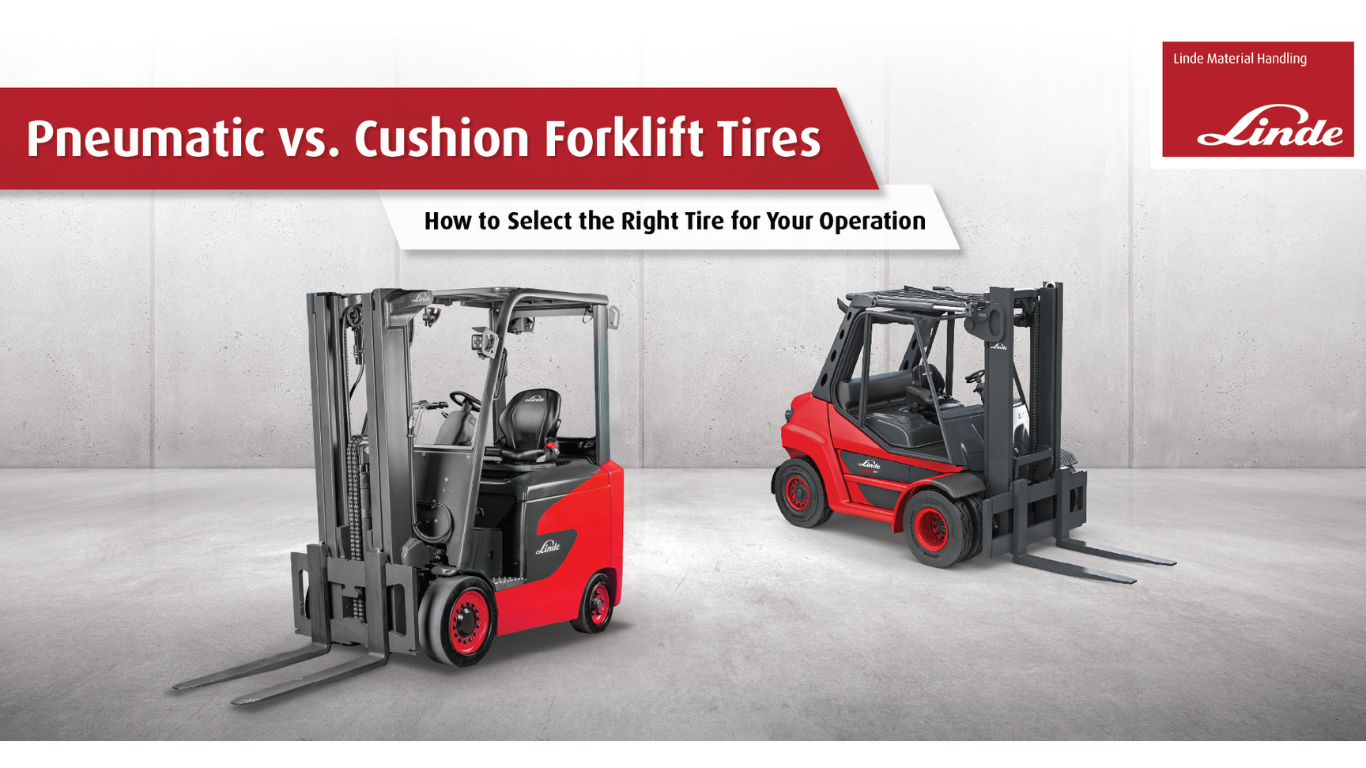The Difference Between Pneumatic and Cushion Forklift Tires: Selecting the Right Tire for Your Operation

Table of Contents
Selecting the Right Tire for Your Operation
December 4, 2024
When selecting a forklift for your operation, there are many options to consider before finally deciding on the right equipment for the job. While ensuring the truck you choose matches your environment and can handle the proper capacity limits, choosing the right tires for your forklift is also essential. Different applications require different forklift tires, and it is imperative to select the right kind of tires because it will affect the overall handling and welfare of the forklift.
Pneumatic Forklift Tires
Pneumatic tires are similar to car and truck tires because of their deep tread, which enables use in outdoor operations due to their ability to grip uneven and rough terrain.
Pneumatic tires are more commonly used on:
- Construction sites
- Railyards
- Ports
Types of Pneumatic Tires
Beyond understanding where pneumatic tires perform best, what exactly are they, and what are the different types available?
There are two different types of pneumatic tires: solid pneumatics and air pneumatics. Knowing the difference between the two tire options will help you make the best decision for your operation, depending on the environment in which your truck will work.
Solid Pneumatic Tires: Solid pneumatic forklift tires are made out of solid rubber and more puncture-resistant. They are ideal for operations with a great deal of debris since you can puncture or gouge the tire.
Air Pneumatic Tires: Air pneumatics are air-filled and not as durable as solid-filled tires. And although air-filled tires are cheaper to purchase, you will likely need to replace them sooner.
Pneumatic tires provide a smoother ride for operators as the air-filled tire can provide a bit of bounce when navigating rough terrain.
Cushion Forklift Tires
Cushion forklift tires are built of smooth, solid rubber and are fitted around a metal rim. Compared to pneumatic tires, this type of tire is easier to maintain and cheaper to manufacture, lowering operations costs. However, these tires do not get a similar level of traction as pneumatic tires do. Therefore, cushion tires are generally best for flat and smooth surfaces and are ideal for indoor applications rather than outdoor settings.
Common operational uses of forklifts with cushion tires include:
- Loading docks
- Indoor warehouses
Cushion forklift tires can’t withstand as much weight as pneumatic tires but can function in smaller capacities. This ability makes them an attractive option for facilities with less space as their smaller turning radius provides an advantage compared to pneumatic tires.
How to Decide Between Pneumatic and Cushion Tires
There are benefits of pneumatic tires and cushion tires, depending on the application, Pneumatic tires have deep tread that gives operators a smoother ride with fewer bumps and less noticeable terrain transitions. While cushion tires work well on smoother indoor surfaces. When deciding which tires are best for your business, keep the following considerations in mind:
- How will your forklift be used?
- How much room do you have to maneuver in?
- Where will your forklift be used?
Consider that the work environment will play a heavy role in making the ultimate decision on tire options. Both cushion and pneumatic tire forklifts can be acquired in any load capacity, ranging from less than 2,000 pounds to more than 200,000 pounds.
Related Insights
Find a Dealer
